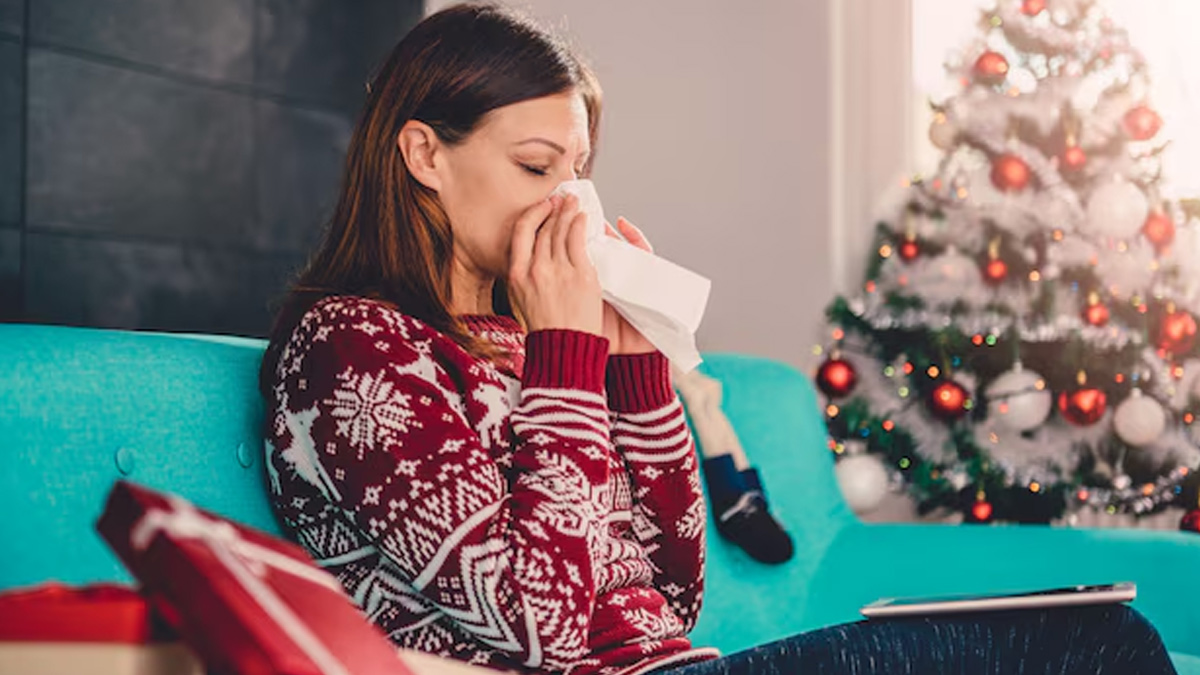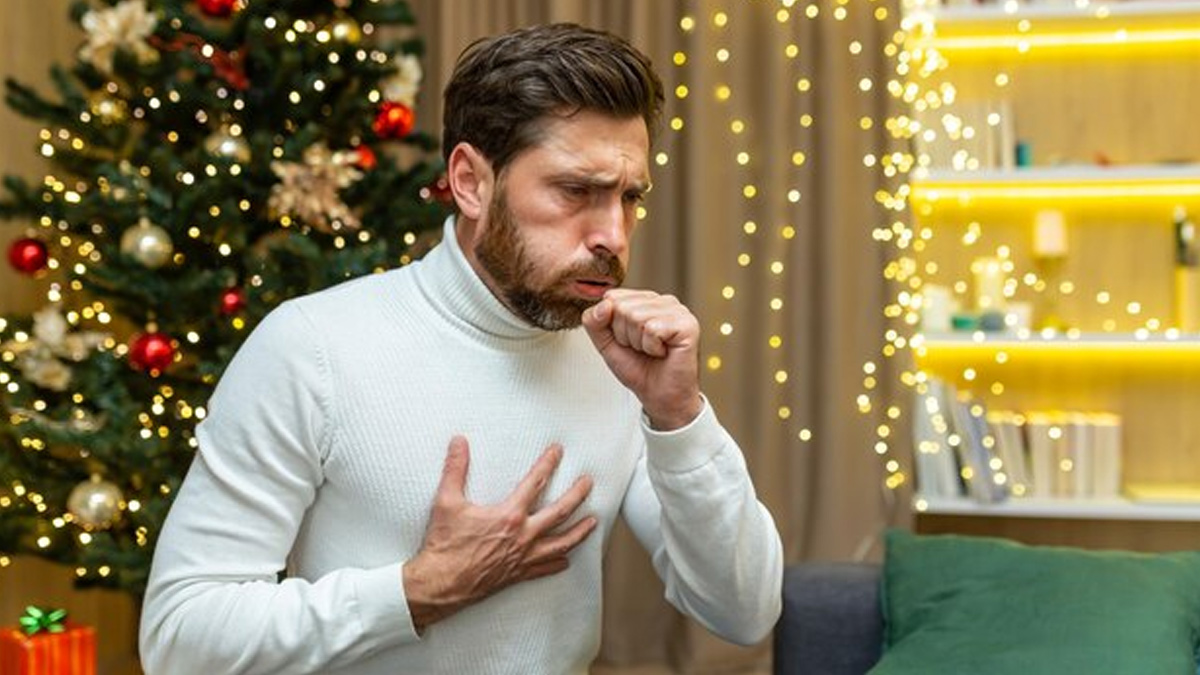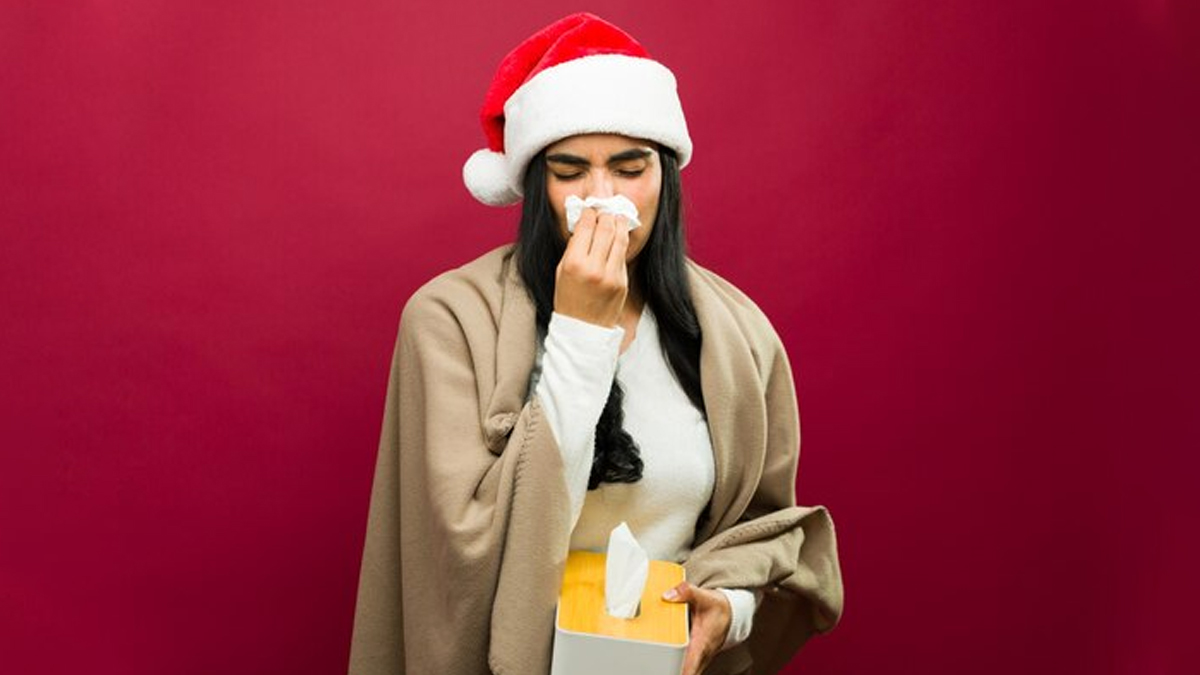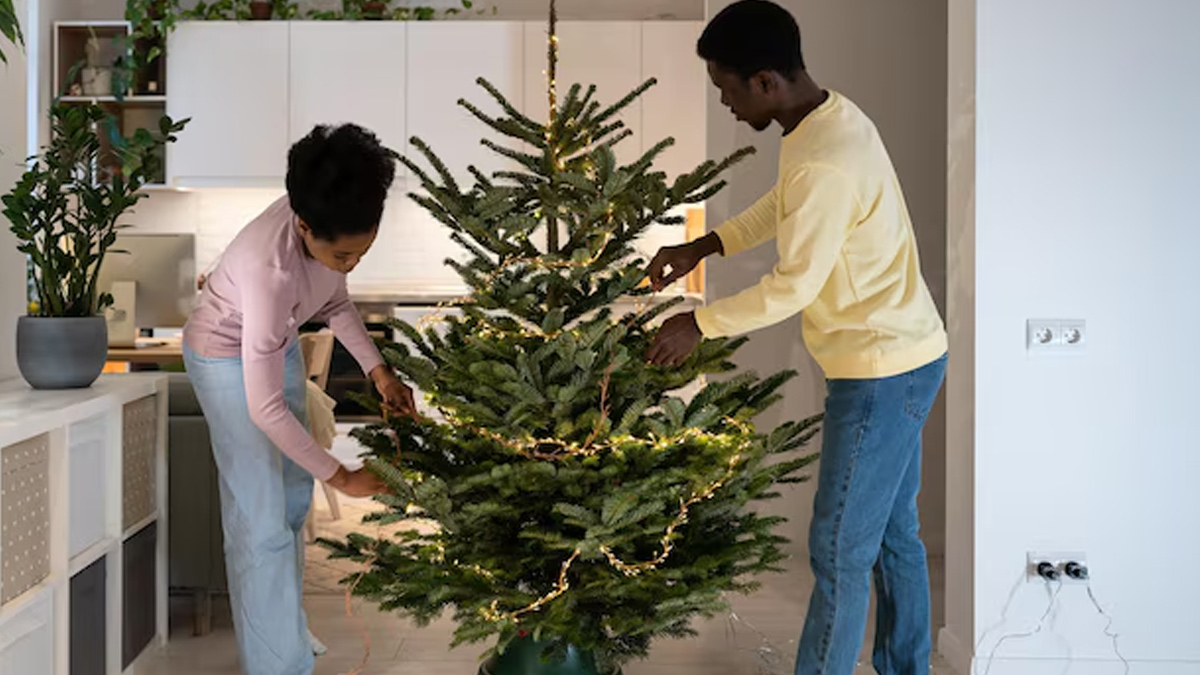
The holiday season is a time for joy, family, and the magic of a beautifully decorated Christmas tree. But for some, that festive centrepiece can bring more than just holiday cheer as it can trigger sneezing, coughing, and itchy eyes. This allergy-like reaction is caused by the mould, dust, and other irritants often found on real or artificial trees and is known as "Christmas Tree Syndrome". We spoke to Dr Sheetal Radia, ENT and Head Neck Surgeon, Wockhardt Hospitals, Mira Road, Mumbai, who explained what causes this condition, how to recognise it, and ways to keep your holidays happy and symptom-free.
Table of Content:-
What is Christmas Tree Syndrome?

Christmas tree syndrome is a term used to refer to a type of allergic reaction one can experience during Christmas. It is when you decorate your house with an artificial or real Christmas tree. These allergies are often caused by the dirt, dust particles, mould, pollen, and dander present on the tree.
According to the National Asthma Council, Australia, Christmas tree syndrome is believed to affect around 6% of people. A 2011 study found over 50 types of mould on samples taken from Christmas trees brought in by the researchers themselves.
Symptoms of Christmas Tree Syndrome

The primary symptoms of Christmas tree syndrome are similar to those of typical allergies. You may experience sneezing, coughing, runny noses, itchy eyes, and rashes on your skin.
“In some cases, people may also experience wheezing or shortness of breath. These respiratory symptoms are often more pronounced in those with a history of asthma or other pre-existing respiratory conditions. The combination of symptoms can make the holiday season particularly challenging for people sensitive to the allergens found in Christmas trees,” said Dr Radia.
Also Read: Do You Also Tend To Overeat During Holidays? Bounce Back with These 10 Quick Tips to De-bloat
How Does Christmas Tree Syndrome Differ from Other Allergies?
While this syndrome shares many similarities with other common allergies, it is distinct in its link to the presence of Christmas trees. Unlike allergies triggered by food, pet dander, or environmental factors, such as pollen, this syndrome is specifically associated with the mould, dust, and other allergens present on both real and artificial trees.
In contrast to other seasonal allergies, which may be triggered by outdoor allergens like pollen during specific times of the year, Christmas tree syndrome is normally a seasonal problem that arises during the Christmas period.
Common Causes of Christmas Tree Syndrome
Several factors contribute to the development of Christmas tree syndrome. Dr Radia listed the causes as follows:

- Mould: Real Christmas trees, in particular, can harbour mould that grows in the soil or bark of the tree. When brought indoors, the mould spores are released into the air, which can trigger allergic reactions.
- Dust: Both real and artificial trees can accumulate dust, especially if they have been stored for a long period. Dust particles can become airborne when the tree is set up or touched.
- Pollen: If the tree has been exposed to the outdoors before being brought inside, it may carry pollen on its branches and leaves. This can be an issue, especially for individuals suffering from seasonal pollen allergies.
- Dander: Like pet dander, the proteins from certain types of trees can act as allergens, triggering a reaction in sensitive individuals.
- Chemical Sprays: Some artificial trees are treated with chemicals to preserve their appearance or prevent pests. These chemicals can also contribute to allergic reactions when the tree is brought into the home.
Diagnosis of Christmas Tree Syndrome
“The diagnosis normally begins with an assessment of the symptoms a person is experiencing. If the symptoms are seasonal and worsen with the presence of a Christmas tree, the condition is likely to be diagnosed as Christmas tree syndrome,” said Dr Radia.
In some cases, a doctor may recommend an allergy test to identify the specific allergens responsible for the reaction. This can help determine whether the allergy is triggered by mould, pollen, dust, or other factors.
Complications of Untreated Christmas Tree Syndrome
If left untreated, Christmas tree syndrome can lead to several complications, especially for people with pre-existing respiratory conditions like asthma. The allergens released by the tree can aggravate asthma symptoms, leading to increased wheezing, shortness of breath, and difficulty breathing. “Also, untreated allergies may contribute to chronic sinus infections or respiratory issues, which can further affect a person’s health and quality of life. It's important to address the symptoms early to prevent long-term complications,” added Dr Radia.
Managing and Treating Christmas Tree Syndrome
The management involves reducing exposure to allergens and using medications to alleviate symptoms. Dr Radia listed the treatment options as follows:

- Medications: Antihistamines, decongestants, and nasal sprays can help manage symptoms, such as sneezing, runny nose, and itchy eyes. In more severe cases, doctors may recommend inhalers or other respiratory medications.
- Air Purifiers: Using air purifiers in the home can help reduce airborne allergens, improving indoor air quality and reducing symptoms.
- Cleaning the Tree: If using an artificial tree, it is important to thoroughly clean it before setting it up to remove any dust or allergens. If you are bringing in a real tree, shaking it outdoors before you bring it inside will help remove mould, dirt, and pollen.
- Ventilation: Ensure proper ventilation in the home, especially in the rooms where the tree is placed. This will help prevent the buildup of allergens indoors.
- Regular Cleaning: Keep the home clean by dusting regularly and vacuuming with a HEPA filter to reduce allergens.
Impact on Mental and Emotional Health
Dr Radia explained, “The physical symptoms of Christmas tree syndrome, such as discomfort, respiratory issues, and fatigue can also affect a person’s mental health. The irritation caused by constant sneezing, coughing, and breathing difficulties during the holiday season can lead to stress, frustration, and depression. People with this condition need to manage their symptoms effectively to ensure that they can enjoy the festivities without feeling overwhelmed by their allergies.”
[Disclaimer: This article contains information provided by an expert and is for informational purposes only. Hence, we advise you to consult your professional if you are dealing with any health issues to avoid complications.]
Also watch this video
Read Next
Shark Tank India Sparks Debate: Namita Thapar and Anupam Mittal Face Off on Work-Life Balance
How we keep this article up to date:
We work with experts and keep a close eye on the latest in health and wellness. Whenever there is a new research or helpful information, we update our articles with accurate and useful advice.
Current Version
